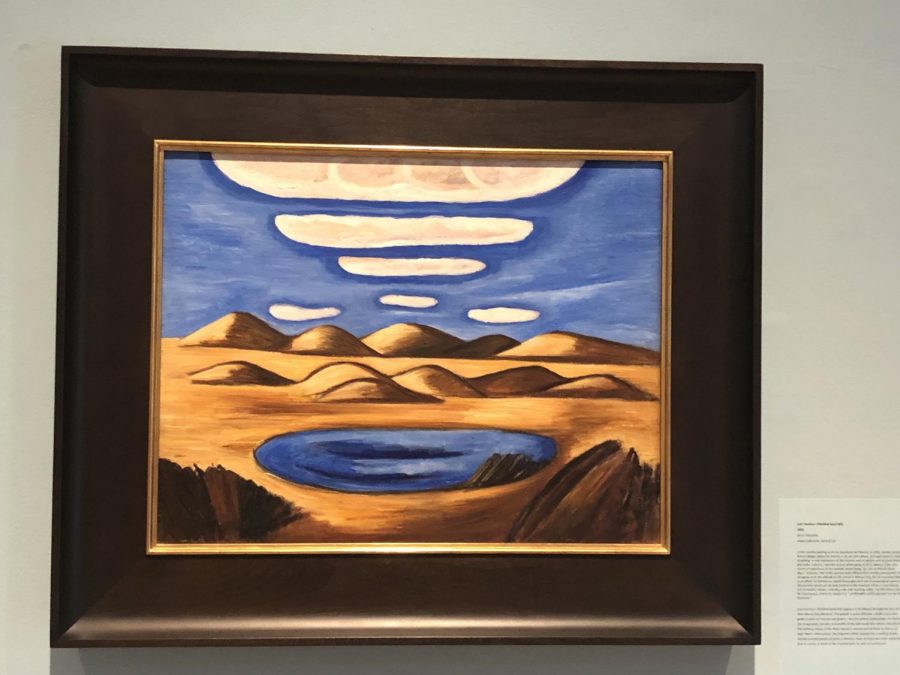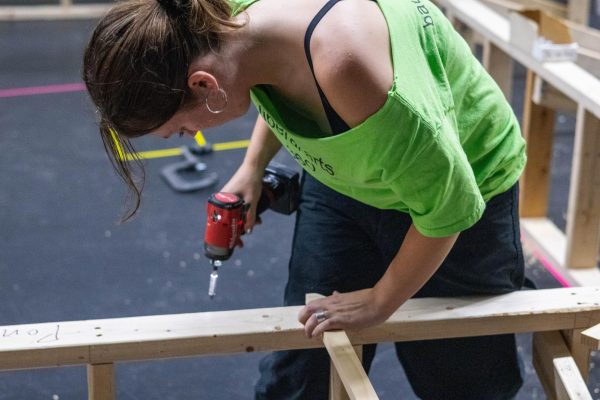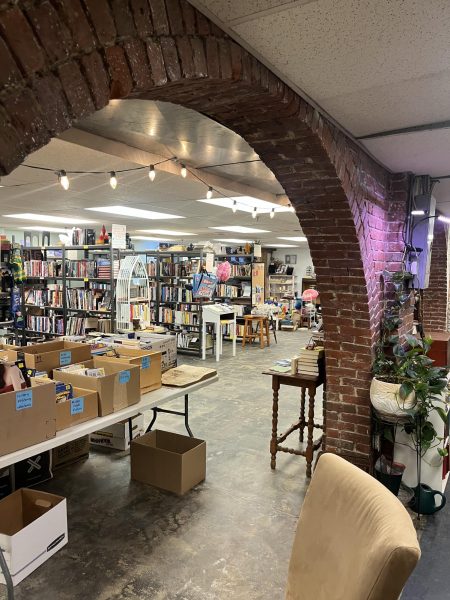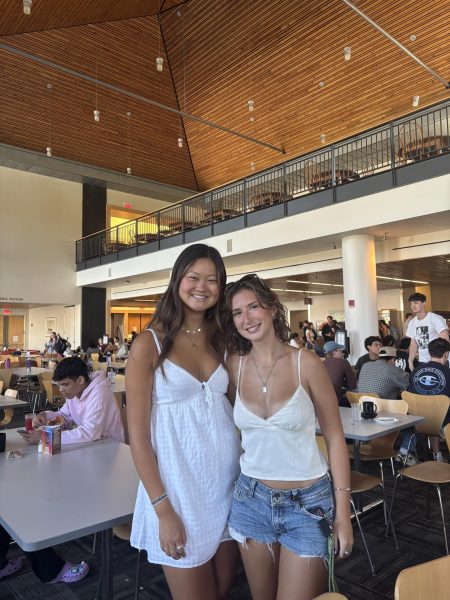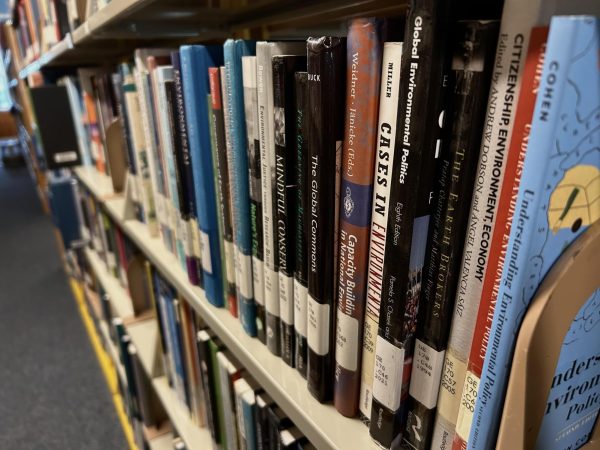Have an Adventure with Marsden Hartley
Hartley was a world traveler as he traveled to Europe, Mexico, and the Caribbean islands. His painting Lost Country-Petrified Sand Hills 1932 was described in the exhibit as “Mexico through the lens of the New Mexico Collections.” Hartley painted twenty pictures in Mexico. (Oil on Masonite, Vilcek Collection 2018.01.01)
As a senior, you’d probably think that I’ve seen every foot of our home in Lewiston, Maine. Well, you’d be wrong. I have known about the Bates College Museum of Art since I stepped foot on this campus, but I did not enter its doors until last week. I did not know what to expect from our museum. I had heard from peers that the space was “small,” so I expected that there wouldn’t be much to see. What greeted me instead was a room filled with paintings, sketches and personal belongings of Marsden Hartley — the subject of the newest exhibit, “Marsden Hartley: Adventurer in the Arts.”
Marsden Hartley is a Lewiston native who was born in 1877. He would become one of America’s foremost modernist painters whose work has been featured in multiple museums around the world, including the Metropolitan Museum of Modern Art. However, his art is not new to Bates College. In fact, his work is the subject of a collection founded by the Bates Museum of Art: The Marsden Hartley Memorial Collection.
Though Hartley was born and eventually died in Maine, he did not stay here his whole life. Throughout his life, Hartley traveled to Europe, Mexico and the Caribbean Islands. During his journeys, he learned of numerous different artistic styles, including his signature abstract style, which he found in Berlin.
In terms of subject matter, there are a few paintings of people, including Jesus Christ, present in the collection, but the most frequent of Hartley’s subjects were still life and landscapes.
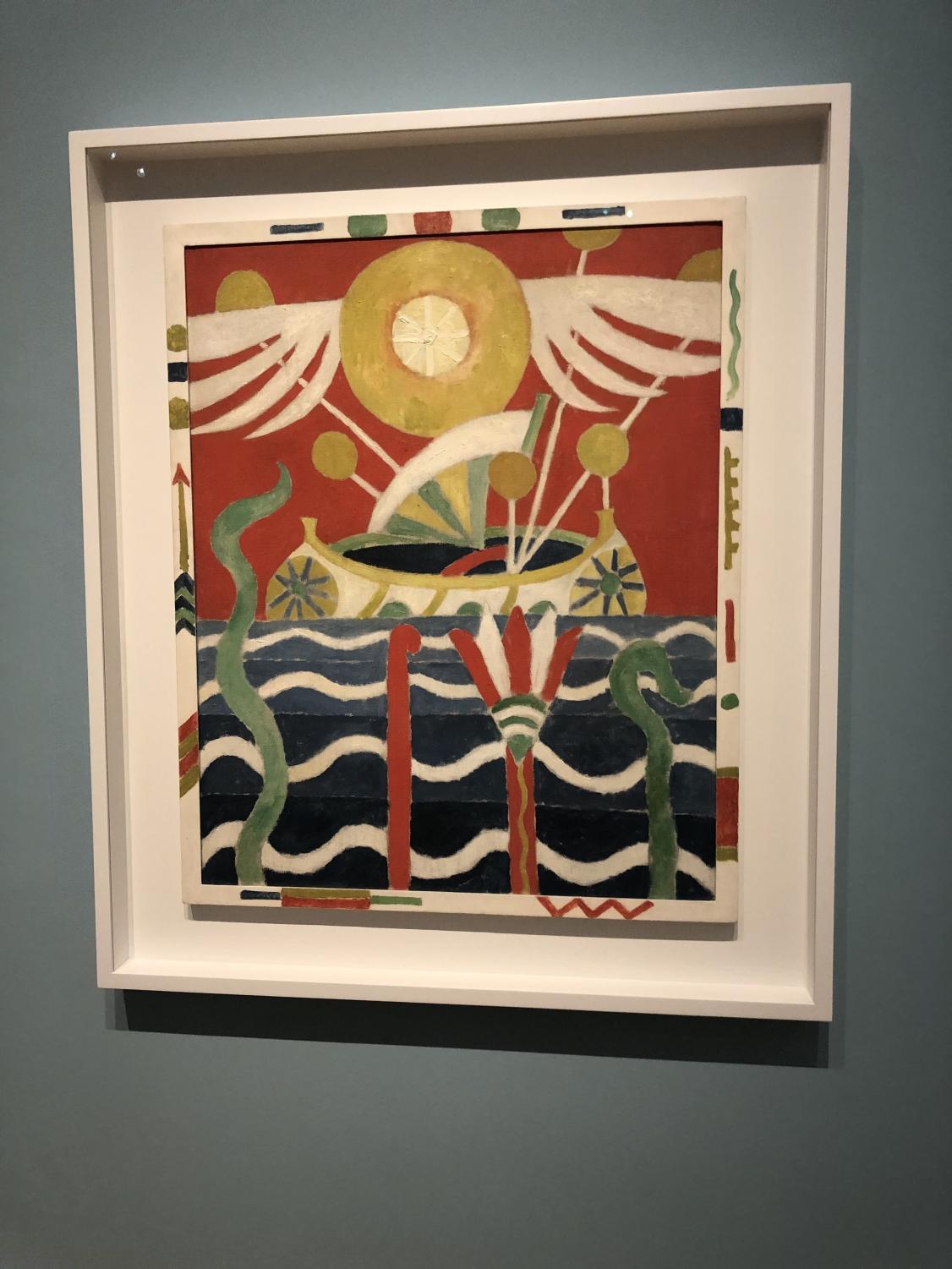
As an expressionist and abstract artist, Hartley was known for his unique use of color. This aspect of his paintings immediately struck me. Hartley was able to masterfully combine warm colors, such as yellows, reds and oranges, alongside cool greens, blues and purples all throughout one piece.
This is clear in paintings such as “Schiff” and “Lost Country—Petrified Sand Hills.” The vibrant reds and yellows of “Schiff” wonderfully complement the soft blues and whites of the piece. Amazingly, according to the museum, this exhibit is the first time that “Schiff” has been shown in the U.S.
Likewise, the bright blues featured in “Lost Country” especially brighten the sand surrounding the apparent oasis. Looking at this piece, I felt as if I could just dive into that water and take in the sun.
The museum holds more than just Hartley’s paintings and sketches; it also showcases the artist’s personal belongings, such as watches, photographs and personal art tools. One of these belongings that I found particularly intriguing was his palette. There were two, in fact: a classic circular one with paint that did not look dry whatsoever, and a second that was a board with descriptions of the colors underneath.
The museums that I have been fortunate enough to visit thus far did not feature artists’ tools as the Bates Museum of Art has Hartley’s. Usually I’d just pass these little pieces and search for the main art piece of a collection. However, the intimacy that the museum creates allows for audiences to enjoy every piece inside the room. The space gives permission to slow down and enjoy the intricacies of the life of an artist.
One of the more intimate details of the collection includes Hartley’s “Mt. Katahdin” sketches. A description for these sketches states that Hartley once wrote to his long-time friends about his relationship with Lewiston: “I want henceforth to be identified with Lewiston—while I live—as I will be radically identified with it when I don’t.”
If we’re lucky, Lewiston is our home for four years; these past years, many of us haven’t had the pleasure of residing here due to a variety of reasons that are too numerous to count. Many Batesies would, I hope, identify with Hartley’s statement as well. When we leave this place that has radically changed us, it is an honor to be radically identified with it.
“Marsden Hartley: Adventurer in the Arts” is open now through Nov. 19. On Thursday, Sept. 30 at 6:00 p.m., the exhibit’s lead curator, Emily Schuchardt Navratil, will give a Zoom lecture on “Marsden Hartley: Adventures in the Archives”. Registration for the exhibit is available on the museum’s website.
Your donation will support the student journalists of Bates College and help us cover our annual website hosting costs.
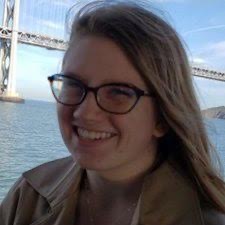
Ellie Boyle is a senior from Gary, Indiana. Something interesting about Ellie would have to be that she's a big animal lover and has raised chickens, rabbits....


